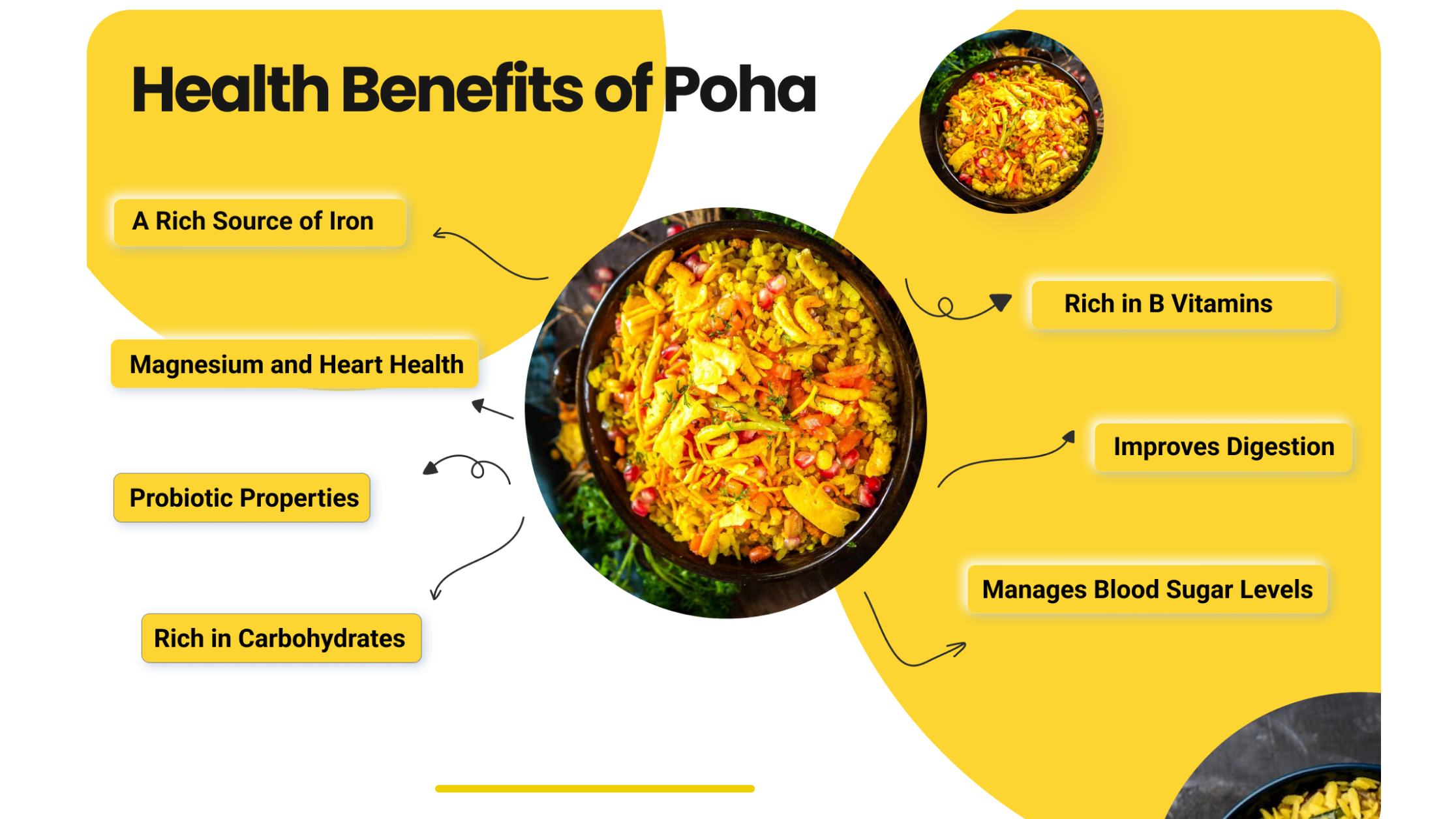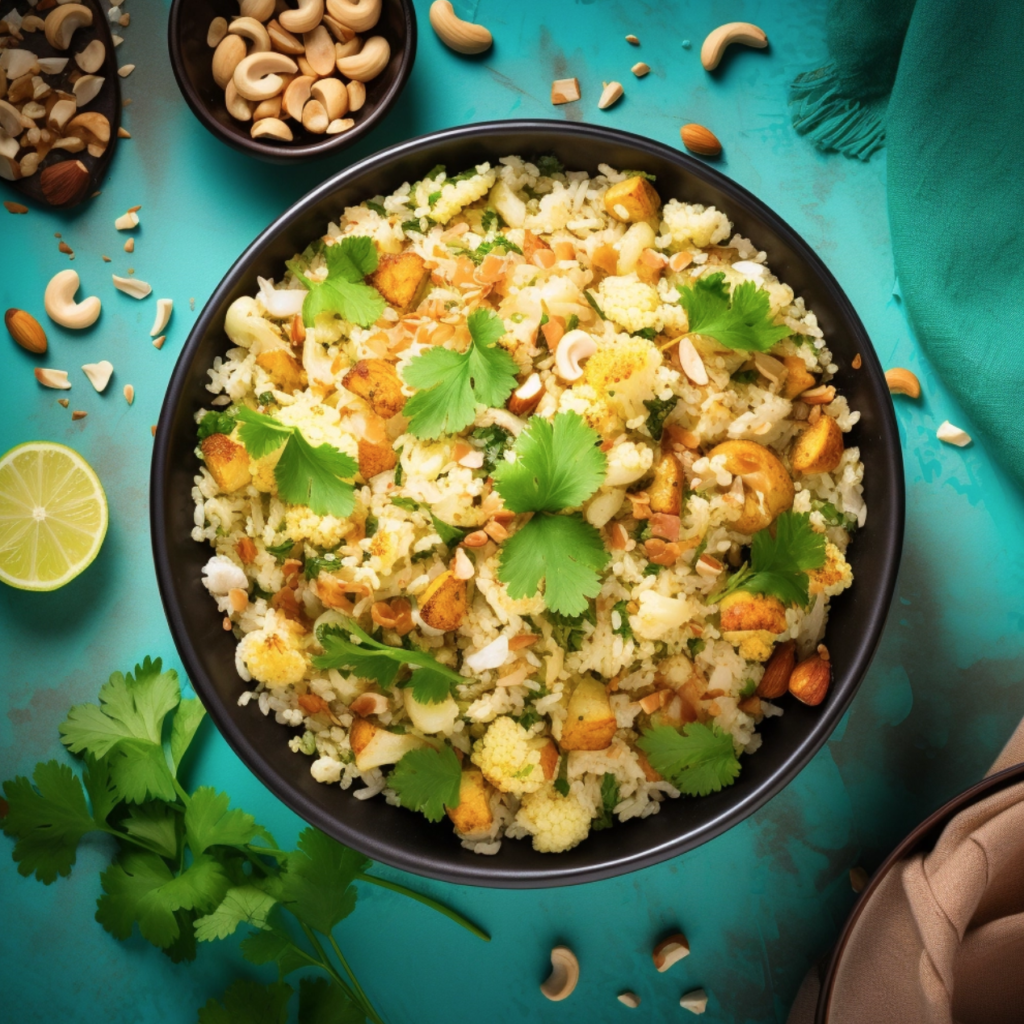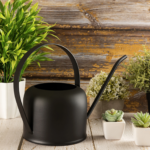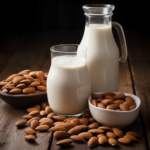Poha Calories: A standard serving of poha, like a single plate or bowl, typically offers between 180 to 191 calories, primarily sourced from carbohydrates. poha nutritional value comprises about 20 grams of carbohydrates, 4 to 6.67 grams of protein, and 6.7 grams of fiber, rendering it an excellent energy source and a satisfying meal choice. It’s worth noting that the calorie content may fluctuate depending on serving size and ingredient variations.
Poha is highly nutritious and comprises carbs, fat, protein, fibre, vitamins, sodium, and potassium. Being a light dish, not only is Poha easy to digest, but it helps control blood sugar and Ideal for Lactose Intolerance.
Let’s deeply explore the nutritional profile of poha and uncover the reasons why this humble dish deserves a prominent place in your diet.
Did you know - Poha emerges as a potent source of iron, boasting 2.8 milligrams per 100 grams. - Poha proves to be a treasure trove of vitamins B1, B3, and B6, crucial for energy metabolism and cognitive function.
How Many Calories are Present in Poha?
The calorie content in poha refers to the amount of energy it provides when consumed. In the case of poha, one cup (approximately 139 grams) contains 158 calories. These Poha calories primarily come from the carbohydrates present in poha, as carbohydrates are the body’s primary source of energy. The relatively low calorie count makes poha a suitable option for those looking to manage their calorie intake while still enjoying a satisfying meal or snack. However, it’s essential to consider portion sizes and any additional ingredients or toppings that may contribute to the overall calorie count of a dish containing poha.
The Poha calorie content of different types of poha can vary based on factors such as portion size, added ingredients, and preparation method. Here’s a breakdown:
- Calories in 1 bowl of poha (139g): Contains 158 calories.
- 1 plate of onion poha: Provides approximately 180 calories.
- 100 gm Poha calories: On average, poha contains about 110 calories per 100 grams.
- 1 bowl of uncooked poha: Contains 394 calories. This is because uncooked poha has a higher calorie density compared to cooked poha due to the absence of water content.
- 2 cups of poha (278g): Provides around 316 calories.
- 1 cup of poha chivda: Contains about 330 calories.
These variations demonstrate that the content of poha calories can differ based on factors such as portion size and added ingredients. It’s essential to be mindful of serving sizes and any additional toppings or ingredients used when assessing the calorie content of a dish containing poha.
Read Also – Side Effect of Ghee on Hairs
Nutrition Value of Poha
The nutritional value of poha includes a variety of essential nutrients like carbohydrates, proteins, dietary fiber, vitamins such as B vitamins (particularly vitamin B1 and B3), and minerals like iron and magnesium. This combination of nutrients makes poha a nutritious choice, providing energy, promoting satiety, and supporting overall health and well-being.
Poha, measured in a 139g cup, contains the following poha nutritional values:
| Calories: | 158 |
| Carbohydrates: | 35 grams |
| Protein: | 2.9 grams |
| Fat: | 0.2 grams |
| Fiber: | 0 grams |
| Sodium: | 4.2 mg |
| Vitamins: Iron – | 2% |
| Cholesterol: | 0 mg |
| Potassium: | 33 mg |
These values indicate that poha is relatively low in fat and protein, while being a good source of carbohydrates. It contains minimal sodium and cholesterol. However, it lacks fiber content. Additionally, it provides a small amount of potassium and a modest percentage of the daily recommended intake of iron. Overall, it can be considered a light and nutritious option for a meal or snack.
Health Benefits of Poha
Beyond its delightful taste, poha offers an range of health benefits that can positively impact your well-being. Here are some of the health benefits of poha:

1. Improves Digestion
Poha is easily digestible due to its pre-gelatinized nature. This means the starch is partially broken down, making it easier for your stomach to absorb nutrients and preventing bloating or constipation. Its high fiber content further aids digestion by promoting regular bowel movements.
2. Manages Blood Sugar Levels
Poha boasts a low glycemic index, meaning it releases sugar slowly into your bloodstream. This helps prevent blood sugar spikes and crashes, making it a good choice for diabetics or those managing weight.
3. Rich in Carbohydrates
Poha provides readily available energy due to its high carbohydrate content, making it a perfect breakfast or post-workout snack. These carbohydrates offer sustained energy without leaving you feeling heavy.
4. A Rich Source of Iron
Iron deficiency is a common concern, especially for women. Poha comes to the rescue with a good amount of iron, supporting the production of red blood cells and preventing anemia.
5. Probiotic Properties
Poha undergoes a natural fermentation process during parboiling, which encourages the growth of healthy bacteria. These probiotics support gut health and immunity.
6. Rich in B Vitamins
Poha is a good source of B vitamins, including thiamine, niacin, and vitamin B6. These vitamins play crucial roles in energy metabolism, brain function, and nervous system health.
7. Ideal for Lactose Intolerance
Unlike dairy products, poha is naturally lactose-free, making it a safe and nutritious option for people with lactose intolerance.
8. Magnesium and Heart Health
Poha contains magnesium, which contributes to heart health by regulating blood pressure and supporting healthy blood flow.
9. Fiber Power
Poha is a good source of fiber, which aids digestion, promotes gut health, and helps regulate blood sugar levels.
Additional Notes:
Remember, the way you prepare poha can impact its health benefits. Opt for healthier toppings like vegetables, legumes, and lean protein instead of fried items or excessive oil.
While poha offers several benefits, it’s important to consume it as part of a balanced diet along with other nutritious foods.
I hope this explanation clarifies the health benefits of poha!
Conclusion
If you’re seeking a nutritious and tasty breakfast or snack option that’s low in calories, consider adding poha to your diet. Packed with essential nutrients and health benefits, it can help you stay satisfied and energized all day long. So, next time you’re craving something wholesome and delicious, give poha a chance and discover its wellness perks firsthand!
Read Also – Calories in Balushahi
FAQs Regarding Poha Calories
How many calories are in 1 bowl poha?
A bowl of poha typically contains approximately 250 calories, depending on the ingredients and serving size.
How many poha calories per 100g?
Poha generally has around 250 calories per 100 grams, though this can vary slightly based on factors like added ingredients and cooking methods.
How many calories are in 1 plate poha?
A plate of poha can range from 350 to 400 calories, depending on the serving size and any additional ingredients like vegetables, nuts, or oils.
How many calories are in 1 cup poha?
One cup of poha typically contains around 180 to 200 calories. Again, this can vary based on factors like the density of the poha and any additional ingredients used.
How many calories are in 100g cooked poha?
Cooked poha contains approximately 125 to 150 calories per 100 grams, depending on factors like the amount of water absorbed during cooking and any added ingredients.
How Much Protein in 100g Poha?
On average, 100 grams of poha contains approximately 2.9 grams of protein. While poha is not particularly high in protein, it can still contribute to your daily protein intake when combined with other protein-rich foods in your diet.







